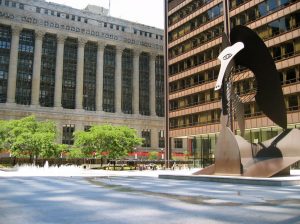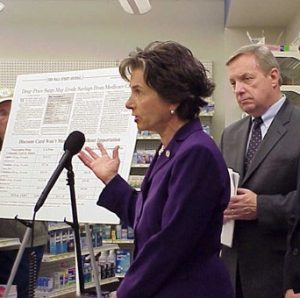Each year, billions of gallons of untreated sewage pour into the Great Lakes, polluting water used for fishing, swimming, and drinking. Many communities’ aging and broken sewer pipes are unable to handle the volume of storm-water runoff that follows rainfall. As a result, sewage and other pollution is discharged to rivers and lakes, beaches are closed, people are warned to avoid the waters and decreased tourism deals a serious blow to local economies. U.S. and Canadian Waterkeepers on the lakes maintain that fixing the lakes’ infrastructure should be a priority for both governments.
The Waterkeeper Alliance, a global environmental organization uniting more than 190 Waterkeeper programs around the world will hold its annual conference on the shores of the Great Lakes in Chicago, Illinois on June 22-26, 2011, to focus worldwide attention on the action plan for solving problems facing the Great Lakes watershed.
The Great Lakes hold 20 percent of the fresh water in the entire world, so any threat to water quality has global, not simply local repercussions. The plan calls for a renewed investment of at least $2 billion in vital infrastructure repairs to treat sewage and polluted runoff.
“Unless desperately needed funding is raised, the increasing infrastructure gap will continue to threaten the health of Great Lakes waterways,” said Waterkeeper Alliance President Robert Kennedy, Jr.
“We must keep momentum and advocacy alive and ensure that this is not a forgotten problem. The Great Lakes region must not be allowed to become a backwater for the federal government.”
The current 2011 U.S. funding of $1.5 billion is dangerously below the levels needed to protect water quality and public health in the Great Lakes states, and it represents a drastic reduction from 2009 and 2010 levels of $2.3 billion. Great Lakes Waterkeepers demand that Congress allot at least $2 billion for the Clean Water State Revolving Fund in fiscal year 2012 and maintain the green project reserve fund at 20 percent.
Similarly, funding was drastically reduced for the Great Lakes Restoration Initiative in fiscal year 2011. This initiative is vital to efforts in cleaning up toxins, combating invasive species, reducing polluted runoff and restoring wetlands and other Great Lakes habitats. The budget was cut by $175 million from the previous fiscal year and Great Lakes Waterkeepers urge Congress in 2012 to restore funding to at least 2010 levels or $475 million.
Local officials from the Metropolitan Water Reclamation District have only recently begun to work to clean up the Chicago river in the face of legal action from the federal government.
“The Great Lakes hold 20 percent of the world’s fresh surface water – 90 percent of the U.S. supply – making this the largest freshwater system on earth,” said Milwaukee Riverkeeper Cheryl Nenn.
“With more than 40 million people relying on the Lakes for drinking water, it is crucial that these waters are restored and protected. Funding needed for infrastructure improvements will go a long way toward realizing that goal.”
Investing in sewer improvements and green infrastructure to filter and treat polluted runoff would not only significantly reduce pollution, but it would also stimulate local economies by creating much needed jobs. According to the Brookings Institution, reducing sewage pollution in the Great Lakes area would provide $2 in economic benefit for every $1 invested.
“In order to make these international waters as economically and environmentally productive as possible, we must invest in projects to upgrade sanitary systems, increase treatment capacities, re-create lost habitats and extend pollution-reduction programs,” said Detroit Riverkeeper Robert Burns.
“With funding from the Great Lakes Restoration Initiative, area organizations have been able to begin three habitat-restoration projects, but much more funding is needed to tackle the many remaining issues.”
Great Lakes Waterkeepers also urge funding for the Great Lakes Legacy Act to clean up legacy contaminants – pollutants discharged from heavy industry long ago that has collected in lake-bottom sediments. Such funding brings results, as evident by Milwaukee Riverkeeper’s advocacy for cleaning up the Kinnickinnic River. More than 170,000 cubic yards of PCB-contaminated sediment were removed from Milwaukee in 2010. Another example can be found with Buffalo Niagara Riverkeeper, whose leadership resulted in the removal of 650,000 cubic yards of contaminated sediment from area waterways in 2011.
“We need increased investment in aging infrastructure as we work to clean up contaminated sediment,” said Buffalo Niagara Riverkeeper Julie O’Neill.
“These waters are the lifeblood of many communities, both environmentally and economically. We must restore them before it is too late.”
Waterkeeper Alliance is a global environmental organization uniting more than 190 Waterkeeper programs around the world and focusing citizen advocacy on the issues that affect our waterways, from pollution to climate change. More information can be found at www.waterkeeper.org.
Related articles
- Bid to repair Lake Michigan and Great Lakes, one marsh at a time (csmonitor.com)
- Prozac Killing E. coli in the Great Lakes (followmehere.com)


















Be First to Comment